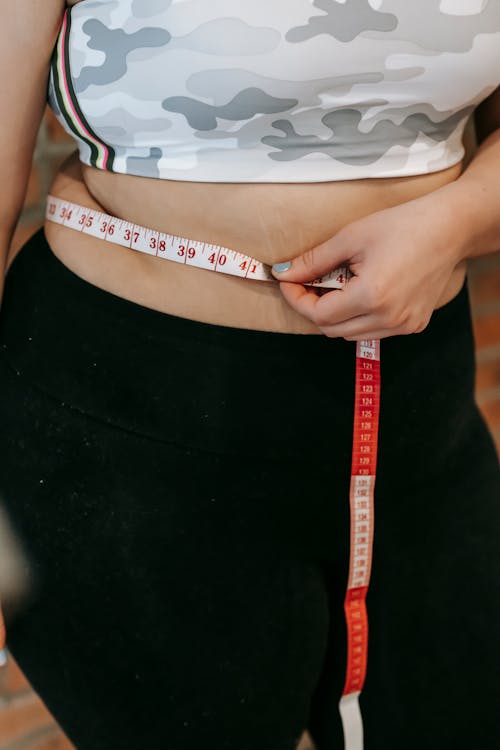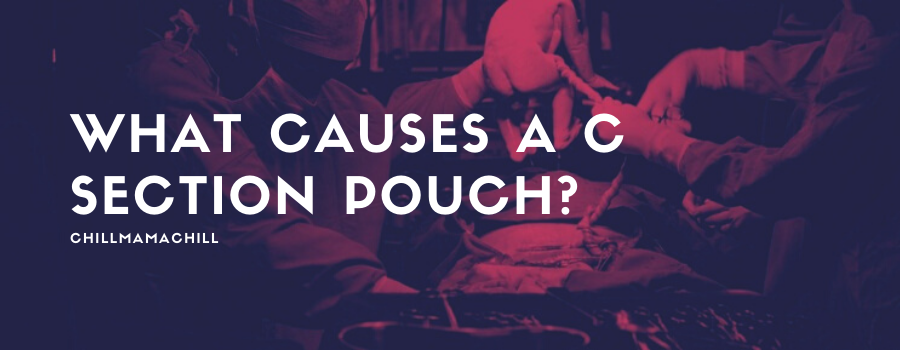Bringing your baby into this world is no mean feat, and it’s understandably exciting once you’ve delivered. Although you’ve no longer got a big belly, your cesarean delivery has left you with a layer of fat where the incision was made. So, what causes a C-section pouch, and is there a way to get rid of it?
A C-section pouch isn’t caused by the surgery alone, as there are layers of tissue and fat overhanging the scar. When your baby is removed, abs and fascia have to be separated, leading to diastasis recti. Despite the manner of delivery, your lower abdomen will be bulkier than pre-pregnancy times.
Remember that you’ve also gained weight during the pregnancy, which you can lose with exercise and healthy eating. Your body is designed to heal, albeit with a bit of push in the right direction. To show you how to support healing and minimize a C-section pouch actively, keep reading.
What Causes My Belly Pouch, a C-section Incision Scar or Body Fat?
There’s a misconception that surgeons cause diastasis recti. Still, the skin layers, fascia, and subcutaneous fatty tissue cut into in a routine traverse or side-to-side operation. The separation of abdominal muscles is a natural phenomenon where your body creates space for the bulging uterus.

During a C-section procedure, the priority for opening you up and closing lies on the fascia. That’s the connective tissue sheet comprising of muscle-holding collagen. The surgeon has to gain access to your baby, and your abs are pulled apart even further.
When the surgeon is closing you up, they start with the uterus and then the fascia. From a medical point of view, this layer forms the basis of your safety and recovery post-operation. Since each C-section isn’t precisely similar, your fatty subcutaneous layer may be sutured while another’s will not. Your doctor can include staples, especially in regards to your fat layer’s significance.
Scar tissue forms where the incision takes place, a firmness that develops beneath your skin layer. The fascia heals up to you, and sometimes a livid overhang of fat causes a more pronounced C-section pouch or shelf. While it will become less evident with time, this scarring can be reduced using physical therapy and the proper diet.
How Can I Reduce My C-section Pouch?
Even after a C-section, you can achieve a flat tummy, meaning that the pouch can completely disappear. An essential consideration is that you’ll have to start gently, carefully choosing your exercises. Initially, you’ll need to focus on reconnecting your core strength and build up the energy with breathing, stretching, and walking exercises.
Avoid the complex movements in your workout program and instead, learn how to make functional movements. If the cause of your C-section pouch is diastasis recti, many core exercises will be doing you more harm than good. Since this is common post-pregnancy, you’ll need to give both the abdominal muscle separation and surgical incision scar to heal.

You can reduce the appearance of sag and get your belly fat after a C-section by;
Letting Your Body Rest
You can’t jump into reducing your C-section pouch on leaving the hospital after your surgery. Your body must have sufficient time to heal, and you’ll be doing moderate housework and gentle exercises for at least six weeks. To reduce the fat shelf successfully, you must regain strength while the scar completely heals.
Your C-section incision scar may appear ready a lot is going on underneath. After six weeks, you can get out and bout with moderate walking, but you must avoid targeted workouts. It makes sense to give the doctor notice of your intentions so they can give you the go-ahead.
Eating a Healthy Diet
Following a healthy diet will help ensure you’re reducing your C-section pouch. It would be best if you eat clean so that the fat in your belly bulge is reduced. You can achieve this by trying 80% unprocessed or whole foods most of the time, or you can adapt your nutritionist’s dieting plan and follow that.
Alongside vegetables, fresh fruit, lean proteins, and some dairy, ensure that food is as close to its natural state as possible and include whole grains, nuts, and seeds. Eating healthy also means avoiding sugar and reducing the intake of fast foods or snacks. You can naturally satisfy that sweet tooth with blueberries or strawberries.
Walking As Much as You Can
You will engage in a consistent walking program to tone your body muscles and reduce the belly fat forming part of your C-section pouch. While burning calories, you’ll also be building bone strength and reducing subcutaneous fatty tissue. Walking is enjoyable too, and your baby can enjoy the sunshine and fresh air as you exercise.
With your little munchkin in an outdoor stroller, you can push them along for walks in the park. Pushing a pram adds to the calories burnt, and once you’re comfortable, you can aim for some hills. The briskness and length of your walk determine how much fat you burn and how fast your C-section pouch decreases.
Avoiding Certain Activities or Exercises
When you’re getting back into resistance training after your C-section, there are specific movements that can cause incision damage. While some will prevent your body from adequately healing, others will prolong your recovery time and how long you’ll have to work on your belly pouch.
Avoid any activity that involves jumping or a high-intensity workout. Stay off any exercise circuit that involves step-ups, crunches, and leg-raises, front-planks, or sit-ups. You shouldn’t engage in exercises that place downward pressure on your pelvic floor muscles, such as heavy overhead presses or weight lifting.
Using a Postpartum Girdle or Belly Wrap
A girdle or belly binder will come in handy to help close the separated abdominal muscles or diastasis recti. Immediately after your C-section delivery, a pouch wrap is provided at the hospital to promote incision healing and help you start walking exercises. These wraps help shrink your uterus and put everything back in place, and with this support can reduce overall post-op pain.
Conclusion
Decreasing the visibility of your C-section scar requires mobilization, a technique favored by physical therapists and one you can perform on yourself. But wait until your incision heals entirely before starting this procedure. You can then rebuild the severed nerves and lost connection using movement, massage, stellar hydration, and nutrition.

I’m Cathrine and I’m a 39-year-old mother of 3 from Utica, New York. And I’m extremely happy you’ve come to visit my hide-out on the web. Here I post about everything related to family-life and usually it will involve babies and lessons I’ve learned over the years from experts, friends, and my own mistakes. So hopefully you will find what i write fun and informational!


